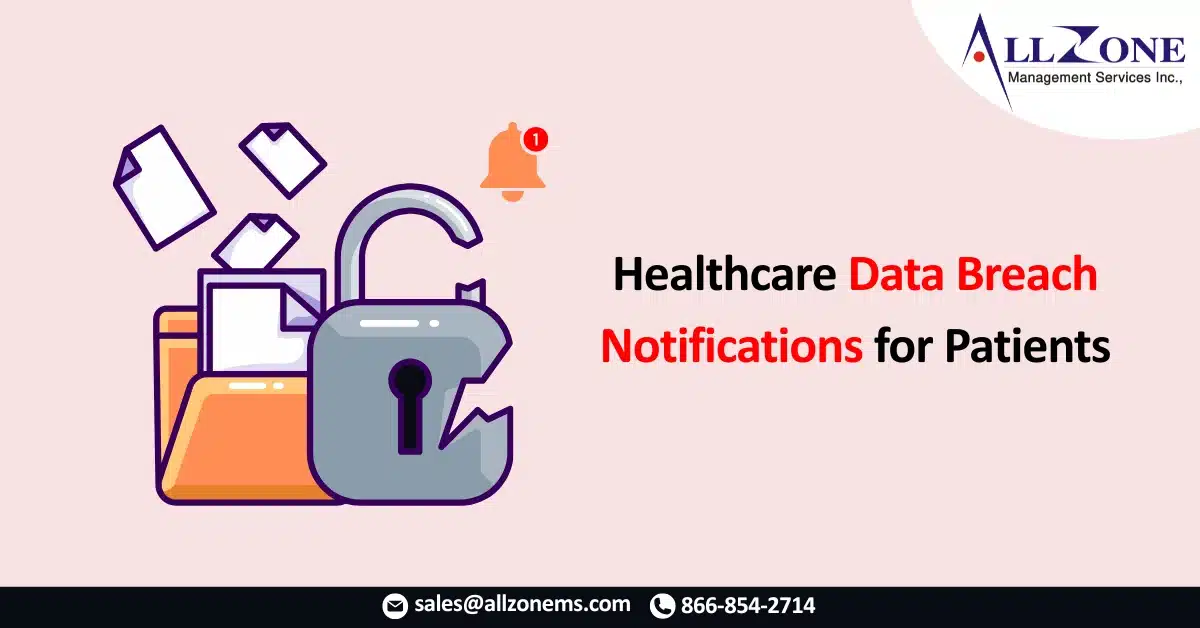In today’s digital age, patient health information (PHI) is increasingly stored and managed electronically. While this shift improves efficiency and accessibility in healthcare, it also introduces significant data privacy and security challenges. One critical area of concern is healthcare data breach—incidents where patient data is accessed, disclosed, or stolen without authorization.
Under the Health Insurance Portability and Accountability Act (HIPAA), healthcare organizations must notify patients of data breaches that compromise their personal health information. Understanding how these notifications work—and what patients should do when they receive one—is essential for protecting health data and preventing further harm.
What Is a Healthcare Data Breach?
A healthcare data breach occurs when protected health information (PHI) is accessed or disclosed in a way that is not permitted under HIPAA. PHI includes a wide range of sensitive data, such as:
- Full names
- Social Security numbers
- Medical diagnoses
- Treatment histories
- Health insurance information
- Billing and payment details
Common causes of healthcare data breaches include:
- Cyberattacks (e.g., ransomware, phishing)
- Lost or stolen devices (e.g., laptops, USB drives)
- Insider threats (e.g., employees accessing data without authorization)
- Misconfigured IT systems or unsecured networks
HIPAA Requirements for Breach Notification
The HIPAA Breach Notification Rule requires healthcare providers, health plans, and business associates to notify affected individuals, the U.S. Department of Health and Human Services (HHS), and in some cases, the media, when a breach of unsecured PHI occurs.
Key notification requirements include:
- Individual Notice: Must be sent to affected patients no later than 60 days after discovery of the breach. This notice can be delivered by mail, email (if the patient has agreed), or phone (in urgent cases).
- HHS Notification: If the breach affects 500 or more individuals, the covered entity must notify HHS immediately. Smaller breaches must be reported annually.
- Media Notification: If 500+ residents of a state or jurisdiction are affected, the entity must notify prominent media outlets in that area.
- Website Posting: If contact information for 10 or more individuals is outdated, a substitute notice must be posted on the company’s website for at least 90 days.
What Information Must Be Included in the Notification?
HIPAA mandates that data breach notifications must be written in plain language and include:
- A brief description of the breach – what happened, including the date of the breach and the date it was discovered.
- A description of the types of PHI involved – such as Social Security numbers, diagnoses, or financial data.
- Steps individuals should take to protect themselves from potential harm.
- What the organization is doing to investigate the breach, mitigate damage, and prevent future breaches.
- Contact information – including a toll-free number, email address, or website for affected individuals to get more information.
What Should Patients Do After Receiving a Breach Notification?
If you receive a healthcare data breach notification, it’s important not to ignore it. Here are key steps patients should take:
- Read the notice carefully. Understand what type of data was exposed and how it might impact you.
- Follow the recommended steps. These may include changing passwords, placing a fraud alert, or monitoring financial accounts.
- Sign up for credit monitoring or identity theft protection if offered by the provider at no cost.
- Request a free credit report from the three major credit bureaus (Equifax, Experian, and TransUnion).
- Report identity theft or fraud to the Federal Trade Commission (FTC).
Why Timely and Transparent Notifications Matter
Prompt notification empowers patients to take proactive steps in protecting their identity and health information. It also builds trust between healthcare organizations and their patients.
Delayed or vague notifications can increase the risk of harm and may lead to non-compliance penalties for the healthcare entity. The Office for Civil Rights (OCR) has fined organizations millions of dollars for failing to meet breach notification requirements.
Data Breach Trends in Healthcare
Healthcare has been the most targeted sector for data breaches in recent years. According to the HHS Breach Portal, also known as the “Wall of Shame,” hundreds of healthcare breaches are reported each year, affecting millions of individuals.
The most common threats include:
- Ransomware attacks locking down electronic health records (EHRs)
- Email phishing campaigns targeting staff
- Attacks on third-party vendors
Healthcare organizations are under pressure to implement stronger cybersecurity measures, but patients must also stay vigilant.
Final Thoughts
Healthcare data breach notifications are a critical component of HIPAA compliance and patient safety. If you receive one, take it seriously. Healthcare providers must act quickly and transparently to mitigate harm and maintain trust.
As a patient, knowing your rights and responsibilities can help you respond effectively and safeguard your sensitive health information.

